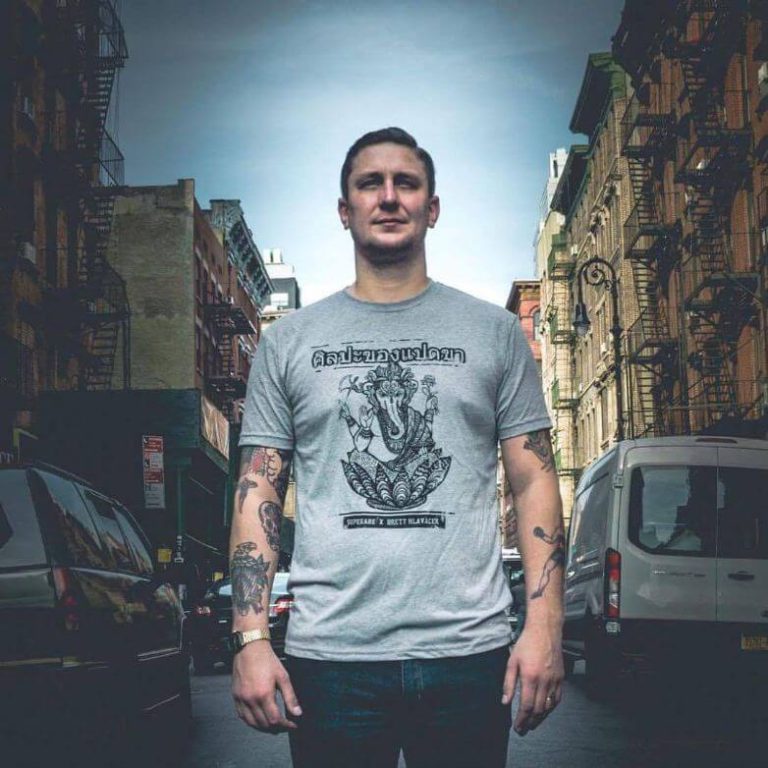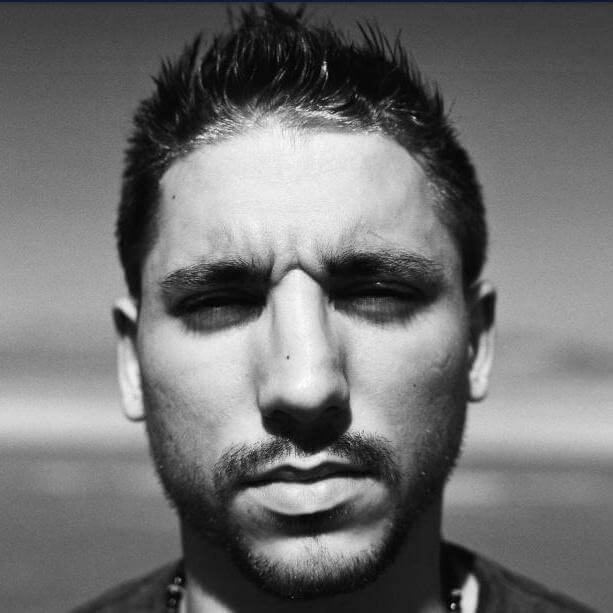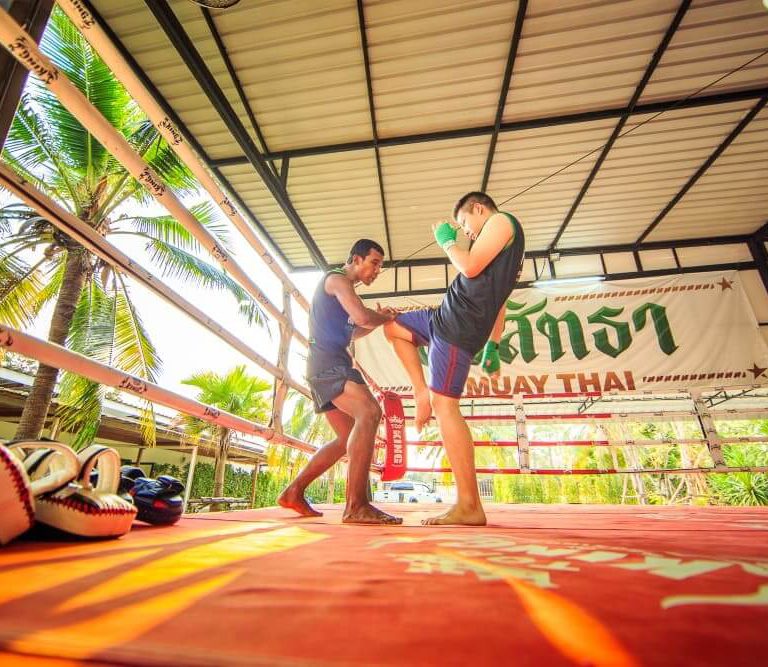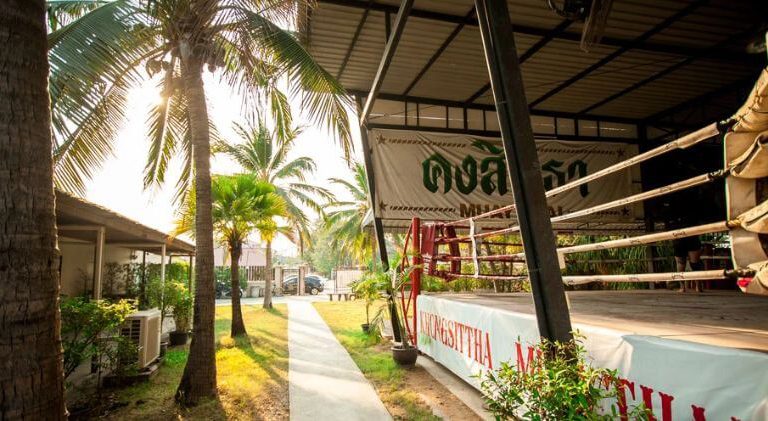
Muay Thai in Thailand is presented as a modern martial art, but has a history that goes back hundreds of years as an actual battlefield combat style. It is referred to as the “Science of Eight Limbs,” since it uses eight points of contact in the fighting style. Combatants use punches, elbow throws knee strikes, and kicks for eight points of contact. Thought to have originated in the 16th century, a period of intense conflict between Burma and Siam. The first practitioner known by name was Nai Khanomtom, who fought for his freedom in the 1700s from his Burmese captors, and returned to Siam as a folk hero. The style has become deeply ingrained in Thai life, with boxing exhibitions a long-standing tradition at festivals and celebrations.
It is generally acknowledged that the ascension of King Chulalongkorn in 1868 brought prominence and development to the sport, with citizens practicing Muay Thai not only for self-defense but for exercise and recreation. The sport again rose to prominence with a worldwide role in the latter half of the 20th century, and is now practiced by men, women, and children in every nation on earth.
Learning Muay Thai in Thailand
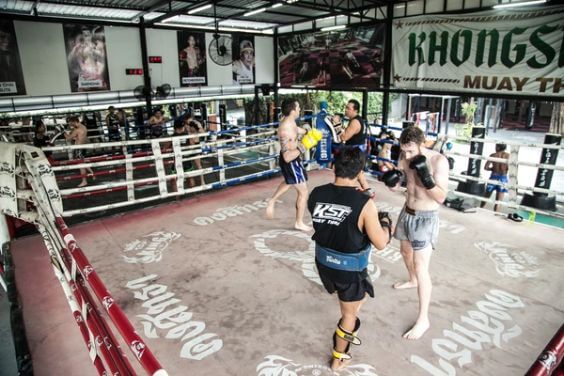
For those who are serious about learning Muay Thai, there are schools all over the world. However, for those who want to immerse themselves in Thai culture and authentic learning, learning Muay Thai in Thailand is an experience for most serious students of Muay Thai. There are a number of programs available to beginners, intermediate, and advanced students alike. However, to put it bluntly, don’t believe the movies or what you see on the Internet. You will work harder than you ever have in your life. You will experience Thailand as you meet new people, learn a new language, and advance your skills and understanding of the sport.
Vacation Break or Longer Stay?
To get an idea of what it’s like to train in Muay Thai in Thailand, you might try booking a short vacation of 2 to 4 weeks to experience Thailand one-on-one. While you can find Muay Thai schools in popular tourist destinations such as Phuket, Chanthaburi, or other beauty and party spots, you should vet the school before you grab your carry-on and head for the plane. Spending a short period of time traveling and investigating schools can be a prelude to a longer stay and more intense training. If you are looking for intense training for two weeks, or sporadic training interspersed with partying and tourism, you will want to be certain that the school can accommodate.
Sport Tourism

Sport tourism allows people who are interested in the sports of a specific country to immerse themselves in the sport and learn from the sport’s mother culture. When you’re booking a Thailand Muay Thai vacation, you will need to be aware of the local laws of the country that you’re visiting, make travel arrangements, obtain a proper visa, find accommodations near your school, and adhere to the local laws. In Thailand there are a number of laws that govern conduct that most tourists take for granted, though we do not think that there are very many students of Muay Thai who are going to overindulge in hard-core partying.
Into the Future
The International Olympic Committee has provisionally recognized Muay Thai, meaning that at any point in the next three years the sport may apply to be included in the next Olympics. Each nation could potentially field its own Muay Thai team to the 2020 Summer Olympics in Tokyo. With this kind of exposure, the already popular sport is reaching the peak of potential availability to interested students from all nations and walks of life. This can make a Thailand Muay Thai vacation a sound investment for anyone who is thinking of entering the sport competitively. Whether you are going to be a fighter, join the MMA circuit, or teach and compete at the Olympic level, immersing yourself in Muay Thai’s country of origin can give you an advantage in understanding the sport from its home territory.
Take the First Step
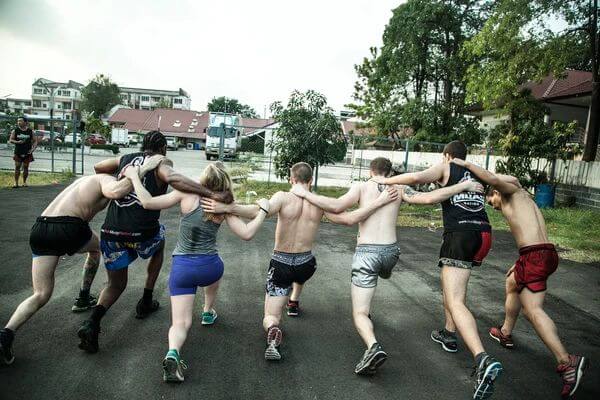
The first step to visiting Thailand is to obtain a passport and visa. There are some exemptions from the visa requirement, and those entering under a visa exemption must carry 10,000 Baht per person or 20,000 Baht per family. Bringing your family with you on your Muay Thai quest might even be a great idea for everyone from kids to grown-ups. The family that plays together – and trains together – stays together. Thailand is a great place for a family vacation, with something for everyone of every age to learn, enjoy, and remember for years to come. Become citizens of the world and ambassadors for the sport when you start your vacation learning Muay Thai in Thailand.

